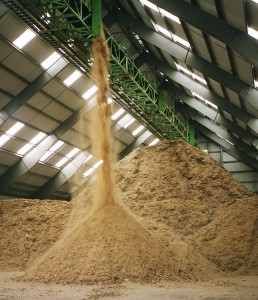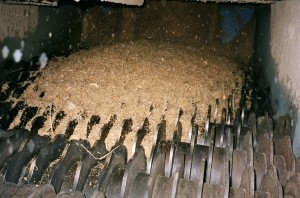Paul Janzé – Advanced Biomass Consulting Inc.
For many reasons, people need to know how much material is present in a biomass storage pile.  Accurate volume measurement is relatively easy, but to determine the amount of dry fibre actually present, the compacted density and moisture content are required. In fact, the greatest number of queries I receive at this website are with regard to biomass pile density and compaction. This is because compaction is the most difficult pile parameter to determine with any consistent accuracy.
Accurate volume measurement is relatively easy, but to determine the amount of dry fibre actually present, the compacted density and moisture content are required. In fact, the greatest number of queries I receive at this website are with regard to biomass pile density and compaction. This is because compaction is the most difficult pile parameter to determine with any consistent accuracy.
Biomass is highly compressible both through artificial and natural means. Every material is different and every pile is different. The amount of compaction depends upon the species, the form of the material, the relative amounts of bark, wood and foliage present, the grind size, particle size distribution, moisture content, weather conditions, the shape of the pile, how the pile is constructed, how long it has been sitting, the amount of decomposition, the amount of contamination with dirt, grit or stones, etc. So, it is just an educated guess as to how much compaction there will be in any one pile. Continue reading →


 The disc screen is a simple piece of equipment that is ideal for, and commonly used for screening woody biomass. It consists of a series of driven shaft assemblies mounted in a frame. Each rotor shaft assembly has profiled discs mounted at regular spacings. The discs from one shaft interleaf with those on the adjacent shafts, creating open areas between the discs and the shafts.
The disc screen is a simple piece of equipment that is ideal for, and commonly used for screening woody biomass. It consists of a series of driven shaft assemblies mounted in a frame. Each rotor shaft assembly has profiled discs mounted at regular spacings. The discs from one shaft interleaf with those on the adjacent shafts, creating open areas between the discs and the shafts.